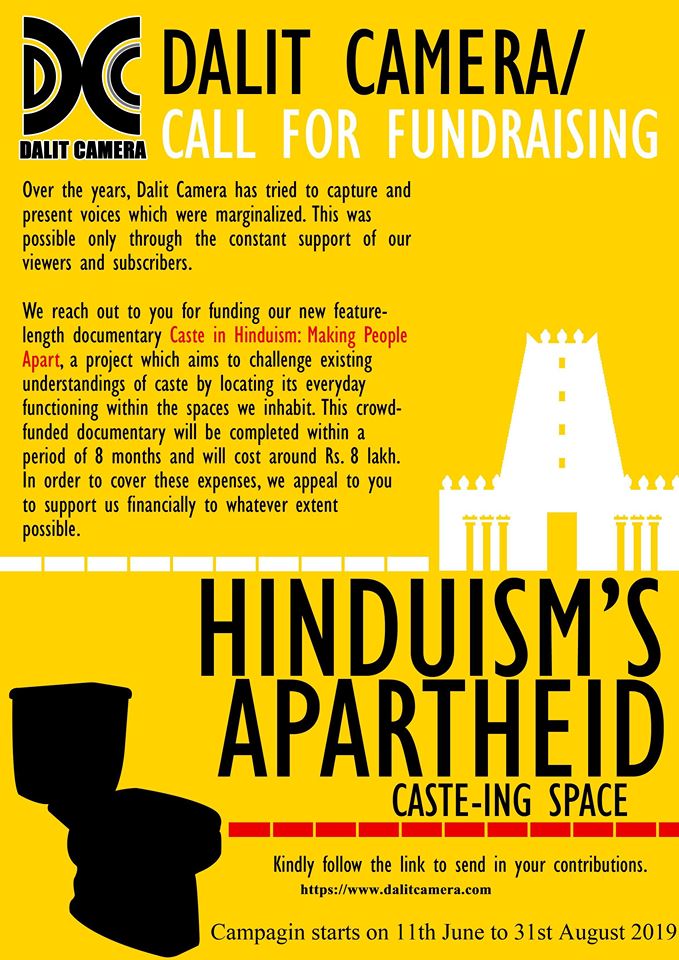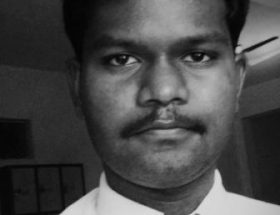Dr. Ravichandran Bathran
Introduction
After India’s independence, the central government introduced different policies to increase the production of agriculture and goods, invested in industries and later opened the market for global capital. The government’s policy in improving agriculture had a major impact on the agrarian society, particularly the village structures. Caste hindus controlled the village, and Ambedkarites and anti caste activists in the left articulated the problems in the feudal caste system and its discrimination. Dalits in these organizations led movements against caste oppression and fought for equality. In response, they were faced with massive violence from the caste Hindus. Villages were burnt and people were murdered.

Most activists found that government machineries kept silent or supported the caste Hindus in suppressing dalit movements, while caste violence continued unabated. As the government failed to stop caste violence and oppression, Dalits looked to the international arena to address caste-based discrimination. They led a campaign to include caste discrimination in the world stage at a conference on “World Conferences against Racism” held in Durban in 2001. The Indian government, caste Hindu academicians and the caste Hindu civil society strongly objected to the move and stalled ‘Caste’ from being included in the conference. Similar discussions arose in the UK in 2018 to outlaw caste based discrimination, which was again voted out.
Those who rallied against the inclusion of caste in the conference argued that caste was not rigid, and with the intervention of the government’s welfare policies, such as reservation, special plan, etc, the caste system had become fluid and lost its grip. Therefore they claimed that caste was not, as dalits argued, a fixed category. Dalits, on the other hand, advocated that even though the operation of the caste system is changing and it has become more complex, its basic structure remains intact. The essence of caste is that it is determined at birth. This difference of opinion between caste Hindus and dalits can be illustrated by the fact that while Gandhi argued that every mother is a scavenger because she looks after the child, for Ambedkar, one is a scavenger not because of one’s work but because of one’s birth.
In the past there were many documentaries on caste, such as Divya Bharati’s documentary “Kakoos”, Amudhan’s “pee”, K. Stalin’s “India Untouched” and Jones’ “The Untouchable Country” did represent caste. The present documentary would explore caste through its relation between space and body.
Working with Dalit Camera (DC) has enabled me to closely scrutinise the thematic frameworks used to study Caste in India. In this documentary, I will focus on that very important point which continuously leads particular castes to be ghettoised and oppressed. Consequently, the discussion on the scavenger will not be confined within the small circle of the manhole or human excreta, and the focus on dalits will be moved away from displaying their naked bodies.
My Approach
‘Caste’ as a Hindu concept of purity and pollution occupies a central stage in different fields of study; anthropology, sociology, indology, social anthropology, humanities, and social sciences, and holds a central place in civil society. Though there has been a lot of research on ‘Caste’, most studies differ in their explanation of its function and manifestation. Mainstream academia, dominated by the ‘caste Hindu’ academics, argues that caste is not a thing of the present. For them, it grows because of caste based political parties. Some scholars go to the extent of explaining it as a secular category, some argue for it to be considered as a class category, while others argue that caste is alive only because of the reservation policy. Academia has done more harm to the anti-caste movement than it has helped in addressing the caste issue. Those who exposed the brutality of caste in India in their writing faced resistance from caste Hindu academicians who brushed their arguments aside as Eurocentric. Whether we like it or not, the popular understanding of caste in India is shaped by the very caste Hindu academicians who have been studying caste from an oriental framework–the very methodology they claim to critique.

Some scholars study caste as a system rooted in the Hindu religion, a hierarchy that is based on caste occupation. Whether a caste occupation is filthy or not is decided by the code of the Hindu religion. Further, dalit scholars study caste as the power that is sanctioned by the Hindu religion, where the oppressor uses his power to force, control, and subjugate the oppressed, and it is a fixed relation between categories of dalit vs non-dalit. However, the Bhangis and Chakkiliyars / Arunthathiyars (scavenging castes spread across India) facing discrimination from other castes in the Scheduled Caste list, argue that power also operates within the scheduled castes.
In the last three decades especially, India has witnessed an increasing number of writings on untouchability and caste violence. A number of anti-caste movements have come up and initiated discussion on the brutal force of the caste system. It’s these very movements that partly enabled democratisation of public goods, such as roads, institutions, transport, and which enabled me to complete a Ph.D. and a postdoctoral degree. Certainly, to study this far, the path I crossed was not full of rose petals and was paved by many struggles undertaken by a number of people. While at least the doors are not completely closed now, these impacts have not reached all corners of the Indian states, and remain limited within a few spaces in urban India.
In this documentary, I discuss the limitations of the above approaches within academia, and anti caste movements, while I investigate and interrogate caste with a focus on the concept of the toilet and the temple. I have been studying scavenging for more than a decade, and interacting with activists has enabled me to study caste from a unique point of view. This multilingual documentary will be around an hour or a little longer in duration and will be based on extensive footage of the functioning of caste in various South Indian states.
Plan for Shooting
The central focus of the documentary will be the toilet and the temple, how they are conceptualized and how the idea of purity and pollution, superiority and inferiority is sowed into these architectural spaces. The documentary will elucidate how these physical structures conceptualise an ideology that is fixed on dalits and caste Hindu bodies as a permanent category. Each state has its own language, culture and social movements. Though there are similarities in caste discrimination across the states, there are some exclusive forms of discrimination practiced in each state. I will study architecture and how each state and its people conceptualize the ‘toilet’ and the ‘temple’. I would like to visually record the different kinds of discrimination and discuss the specific patterns of atrocities that manifest in each of the states of Tamil Nadu, Kerala, Karnataka, Andhra Pradesh, Telangana and some other parts of India.
The study of architecture will comprise of visits to sites built in colonial and pre-colonial times in each of these states, and the study of the conceptualisation of the toilet will comprise of interviews of scholars and activists’ understanding of caste and its function.
Reason for crowdfunding
The need to make a documentary on caste arose when I started to capture voices of dalits for Dalit Camera. The voices on the field questioned the way caste has been taught and understood among educated activists. Through this documentary, I aim to challenge the existing understanding of caste and bring out voices of different people and their experience with caste, to help us understand how caste is functioning on the ground. The work requires a full time engagement for the time period of 8 months. In order to cover the various expenses involved in making this documentary, I appeal to you–the reader–to support me by monetarily contributing to whatever extent possible.
Objective
The objective of the documentary is to help students, activists, foreign scholars understand and explain ‘caste’. This documentary would also be pivotal to campaigns to include caste among the list of other recognised discriminations such as race and apartheid, around the world.
Outcome of the documentary
Approximate duration of the documentary: 1 hr
Language: Multilingual, the voice over will be in English
Subtitle: English
No. of months to complete: 8 months
Editor: Dr. B. Ravichandran, founder of Dalit Camera, has spent more than a decade researching about scavenging. His academic experience along with his experiences with Dalit Camera have shaped his understanding of caste and scavenging. He is also supported by Shankar Narayan Memorial Library. The ideas which he has written in this proposal have already been written as a paper titled, “Politics of Space of Indian toilet: Extreme binaries from Untouchable to Touchable” which is being published in the upcoming edited book volume by Prof. Manas Ray: State of Democracy in India: essays on life and politics in contemporary times.
P.S: Equipment will be used for dalit camera purposes as well during and after the shooting.
Documentary Team
Sumithra Sankaran
Pushpa Achanta
Damayanti Saha
Expenditure

If you are willing to contribute for the project please send your contribution to the following account details.
Account Number: 30712434743
Bank: State Bank of India
Branch: Kotagiri
IFSC Code: SBIN0004876
Name: B. Ravichandran
Mobile: 8220705729
Email: dalitcamera@gmail.com
~~~









